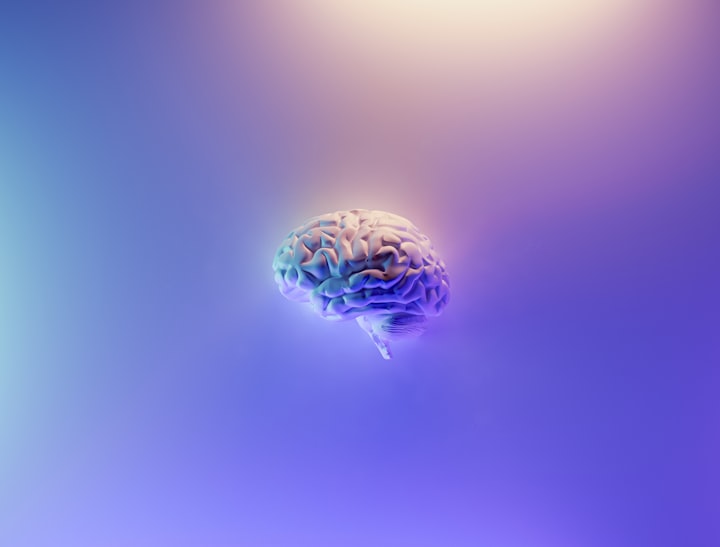Brain Waves: Unraveling the Electrical Symphony of Your Mind
We will also delve into the concept of brainwave entrainment - can we actually influence our brainwaves and potentially "hack" our brains for improved focus or better sleep? The article explores the science behind this idea and its limitations.

The Electrical Language of the Brain
Brain waves are the product of synchronized activity among billions of neurons in the brain. These neurons constantly communicate with each other by sending electrical signals. When a large group of neurons fire together in a rhythmic fashion, the combined electrical activity generates a measurable wave pattern. This rhythmic fluctuation is what we call a brain wave.
The frequency, measured in Hertz (Hz), and amplitude (strength) of these waves provide crucial information about the underlying brain activity. Slower brain waves, with lower frequencies, are generally associated with relaxed or inactive states, while faster waves indicate heightened alertness and focused processing.
Decoding the Brainwave Spectrum
Brain waves can be broadly categorized into five main types, each with distinct frequencies and associated mental states:
Delta Waves (0.1 to 3.5 Hz): The slowest brain waves, prominent during deep sleep and unconsciousness. Delta waves are associated with restorative functions and may play a role in memory consolidation.
Theta Waves (3.5 to 7.5 Hz): Associated with drowsiness, daydreaming, and meditation. Theta waves are believed to be involved in internal processing, imagination, and memory.
Alpha Waves (8 to 12 Hz): These waves become dominant when we enter a state of relaxed wakefulness. Alpha waves are linked to calmness, creativity, and a sense of well-being. They are also prominent when our eyes are closed but the mind is awake.
Beta Waves (13 to 30 Hz): Beta waves are the hallmark of an alert and engaged mind. They dominate during active thinking, problem-solving, and focused concentration. Higher beta frequencies are associated with heightened alertness and even anxiety.
Gamma Waves (Above 30 Hz): The fastest brain waves, associated with high-level information processing and binding different brain regions together to create a unified perception. Gamma waves are believed to play a crucial role in learning, memory, and conscious awareness.
Brain Waves: A Window into Mental States
By analyzing the dominant brain wave frequencies, researchers gain valuable insights into various mental states. For example, an abundance of alpha waves might indicate a relaxed and focused mind, while increased theta waves could suggest drowsiness or meditation. Similarly, changes in brain wave patterns can help diagnose certain neurological conditions like epilepsy, characterized by abnormal electrical activity in the brain.
Harnessing the Power of Brain Waves: Biofeedback and Beyond
The field of biofeedback utilizes brain wave monitoring to help individuals gain some control over their brain activity. By providing real-time feedback on brain wave patterns, individuals can learn to regulate their mental states. For example, biofeedback training can be used to promote relaxation, improve focus, or even manage chronic pain.
Another emerging area of interest is brainwave entrainment. This technique involves exposing the brain to external stimuli, such as light or sound pulses, at specific frequencies. The idea is to synchronize the brain waves with the external stimulus, potentially influencing mental states. While the research is still ongoing, brainwave entrainment holds promise for applications in improving focus, sleep quality, and even treating conditions like anxiety and depression.
The Future of Brain Wave Research
The study of brain waves is a rapidly evolving field with immense potential. As technology advances, researchers are developing increasingly sophisticated tools to measure and analyze brain activity with higher resolution and accuracy. This holds promise for not only a deeper understanding of the brain but also for the development of new diagnostic tools and therapeutic interventions for various neurological and mental health conditions.
Unraveling the mysteries of the brain is a complex endeavor, but brain waves offer a powerful tool to illuminate the inner workings of this remarkable organ. As we continue to explore the intricate language of brain waves, we unlock new possibilities for enhancing our well-being and understanding the very essence of human consciousness.
To learn more about brainwave entrainment and explore potential resources, visit Billionaire Brain Wave.
About the Creator
Tracy Nguyen
Hello everyone! I'm Tracy.
This is where I share beauty tips, skincare routines, makeup tutorials, fashion inspiration, and much more. I believe that every woman deserves to feel confident in her natural beauty, and this blog is
Reader insights
Outstanding
Excellent work. Looking forward to reading more!
Top insights
Compelling and original writing
Creative use of language & vocab
Eye opening
Niche topic & fresh perspectives






Comments (1)
Brainwaves are so interesting. I hope someday technology can copy my dreams into movies. I dream every night and every nap that I take.